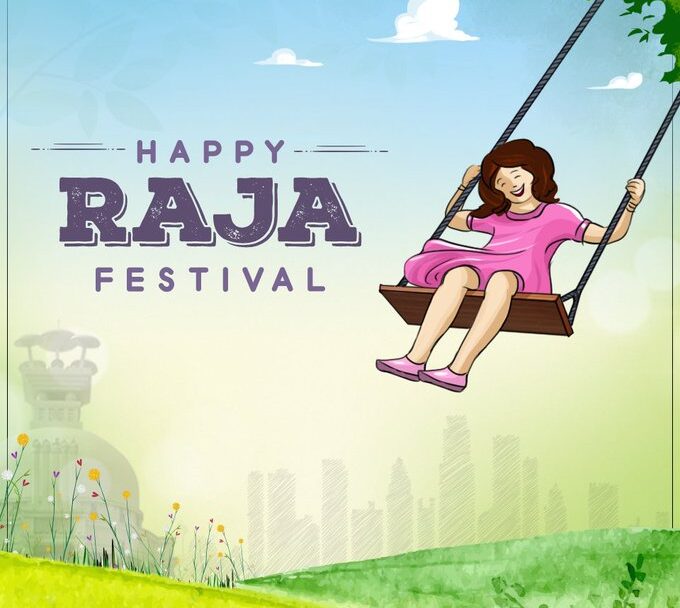It’s that time of year again when Odia households are busy preparing for the ‘Raja’ festival, which celebrates womanhood. This event marks the earth’s fertility regeneration period, which corresponds to the menstrual cycle that women go through.
Raja is shorthand for Rajaswala (meaning a menstruating woman) and is celebrated throughout Odisha and among Odias living elsewhere. It represents the earth’s menstrual cycle, which is similar to that of a woman. The earth is thought to be in a latent stage, similar to how women go through “periods.” All agricultural activities are prohibited during the earth’s resting period.
It is a celebration of womanhood organized by women for women. The fairer sex is lavished with new clothes, accessories, and delicacies and is forbidden from doing housework. The first day is known as Pahili Raja, the second day marks the beginning of the month of Asadha and is commemorated by Mithuna Sankranti, the third day is known as Basi Raja, and the fourth day is known as Basumati Gadhua, which marks the end of the earth’s menstruation.
When they are not doing household chores, the women dress up in their finest attire, apply aalta on their feet, kumkum on their forehead, and, more recently, mehendi/henna on their palms and nail art to adorn their nails.
Raja is distinguished by the traditional swing and the games that go with it. Traditionally, swings are hung from mango or tamarind trees. As the swing swings back and forth, Raja folk songs are sung in chorus. “Banaste daakila gaja…” is a traditional Raja song. Ludo, Taas (playing cards), Baagudi, Bohu Chori, Puchi, and other games (though not very popular in urban areas) are played with friends well past midnight!
Every home smells like poda pitha, arisa pitha, Raja paan, chakuli pitha, and other delicacies. These delicacies are also shared with neighbors and relatives. Raja is also a time when girls enjoy the delectable paan. With so many Raja paan varieties now available, vendors are doing brisk business to keep up with heavy demand.
Girls should avoid walking barefoot and instead wear footwear made of areca nut shells and banana stalks. They are also asked to stay in a single room, traditionally known as the Raja Ghara, where they make their bed on the floor and worship a block of clay with vermilion, flowers, incense sticks, and delicacies. Men are not permitted to enter the Raja Ghara. Many Raja customs, however, are not strictly followed in many parts of the state.
While menstruating women are alienated and forbidden from entering temples in many parts of India, Odisha takes great pride in celebrating this essential aspect of womanhood.







 Finance
Finance







